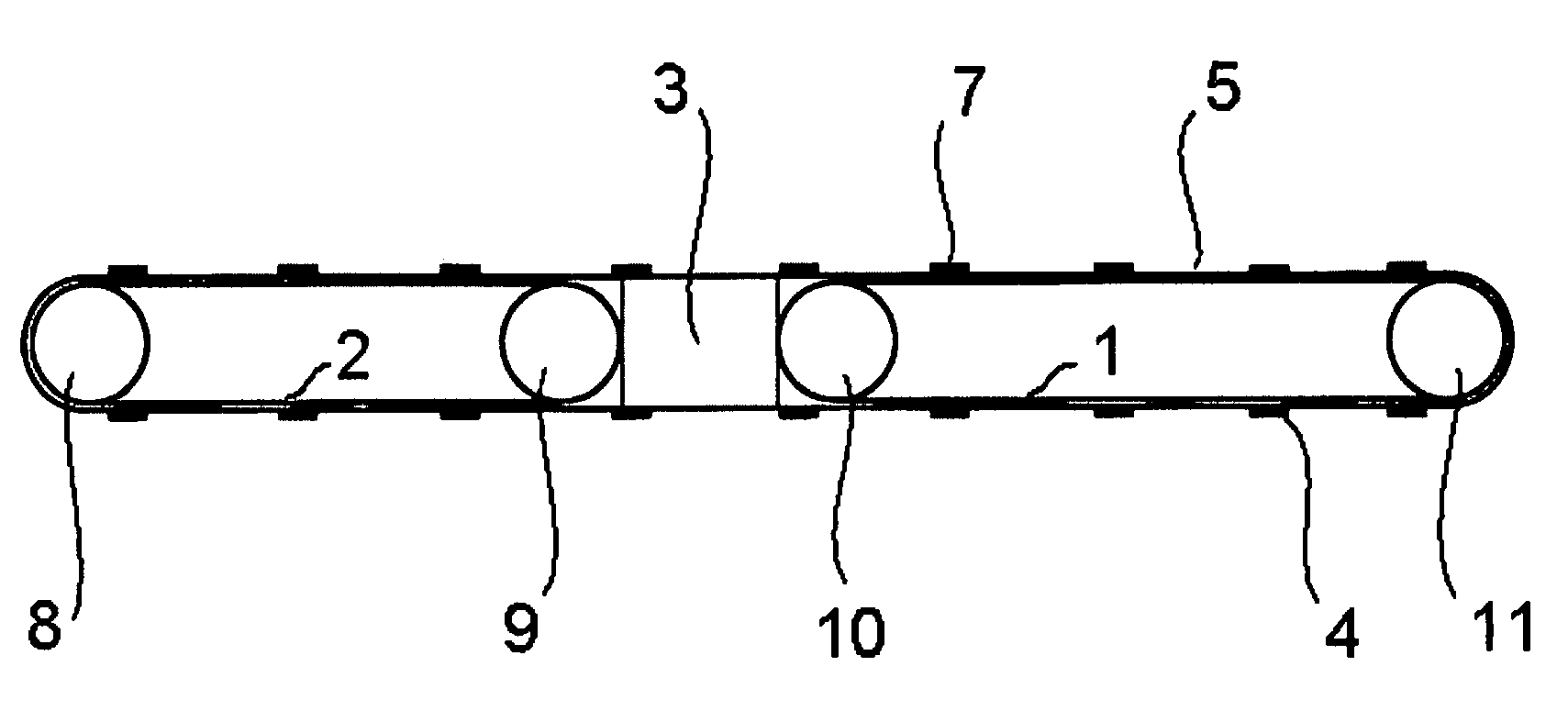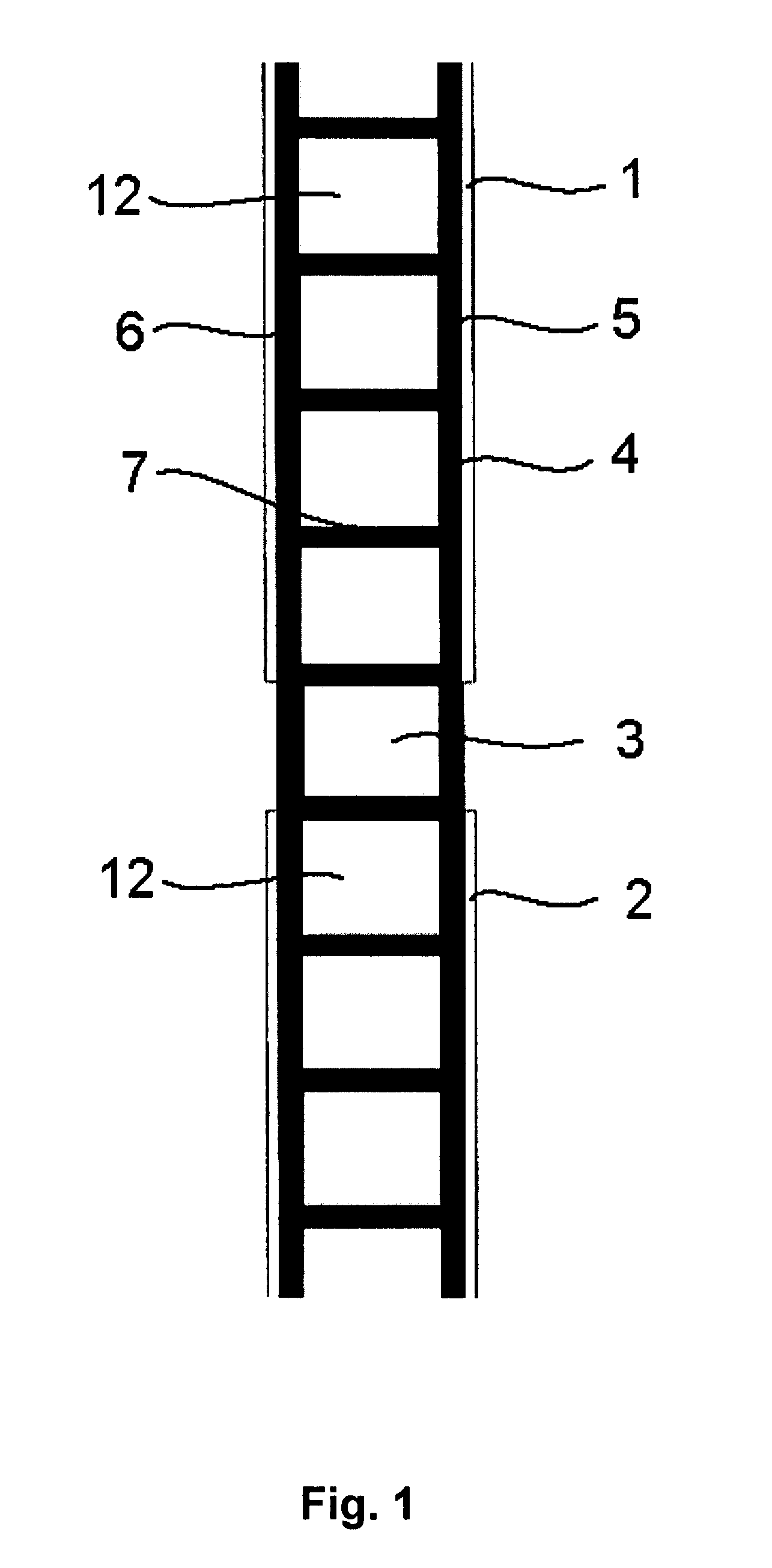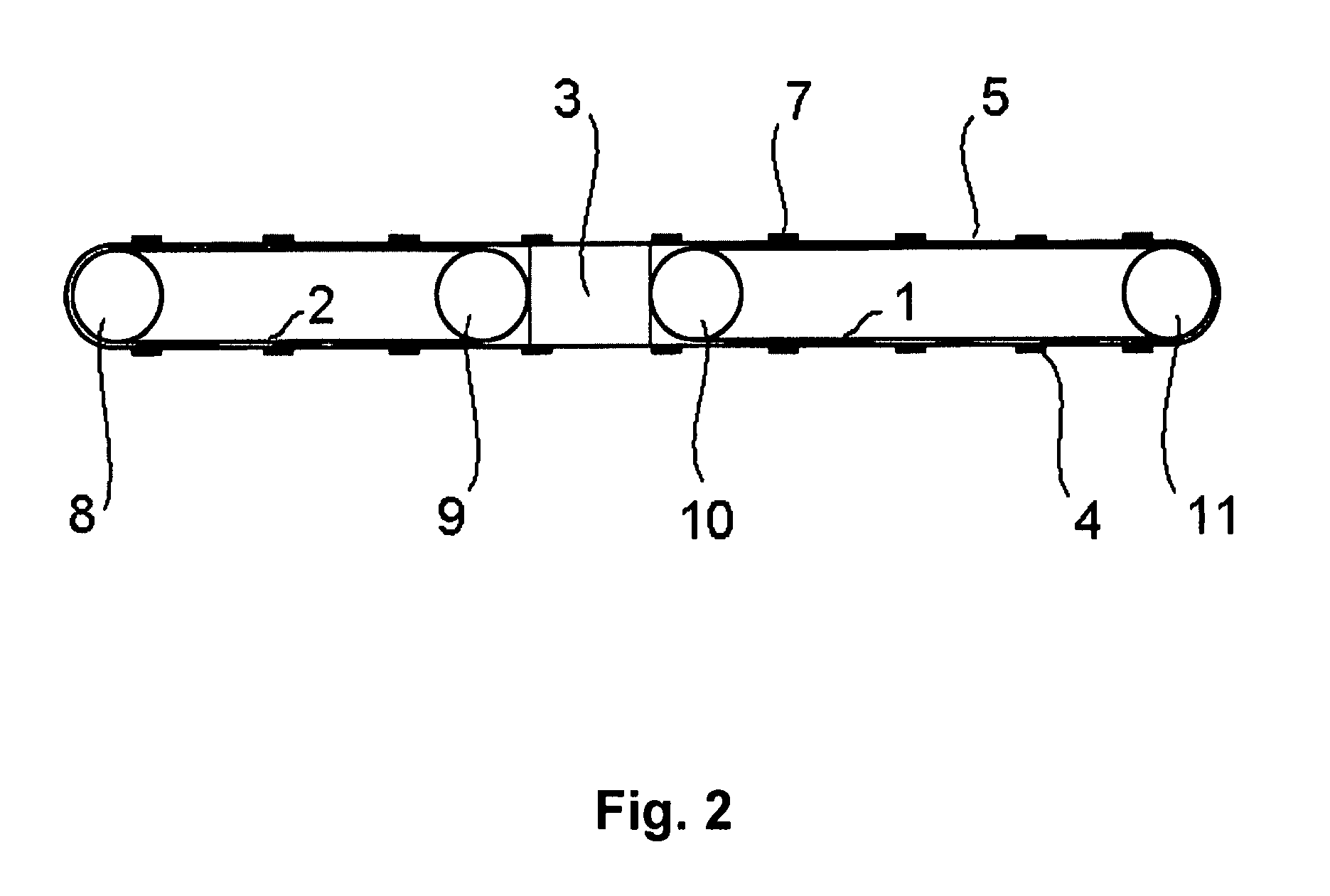Device and method for optically scanning a machine-readable label applied to an object
a machine-readable label and optical scanning technology, applied in the field of optical scanning machine-readable labels applied to objects, can solve the problems of unfavorable economic development, change in the position of objects on the belt, and unfavorable transportation
- Summary
- Abstract
- Description
- Claims
- Application Information
AI Technical Summary
Benefits of technology
Problems solved by technology
Method used
Image
Examples
Embodiment Construction
[0021]A device for optically scanning a machine-readable label applied to an object having a first belt conveyor 1, a second belt conveyor 2 and a scanning device 3 is shown in FIGS. 1 and 2. It is also possible to use only belt conveyor 1 and one receiving tray after the scanning device. In the embodiment shown as an example, the scanning device 3 is located between the two belt conveyors 1 and 2. Parallel to the two belt conveyors 1 and 2 runs a supplementary conveyor device 4 which consists essentially of two conveyor belts 5 and 6 and slats 7 located between the conveyor belts. The two conveyor belts 5 and 6 and the slats 7 run directly on the surface of the two belt conveyors 1 and 2 and of the scanning device 3. In order to be able to use as large an area of the belt conveyor 1 as possible when placing objects not shown in the drawing on the belt conveyor 1, the two conveyor belts 5 and 6 run along the sides of the two belt conveyors 1 and 2. The two belt conveyors 1 and 2 are...
PUM
 Login to View More
Login to View More Abstract
Description
Claims
Application Information
 Login to View More
Login to View More - R&D
- Intellectual Property
- Life Sciences
- Materials
- Tech Scout
- Unparalleled Data Quality
- Higher Quality Content
- 60% Fewer Hallucinations
Browse by: Latest US Patents, China's latest patents, Technical Efficacy Thesaurus, Application Domain, Technology Topic, Popular Technical Reports.
© 2025 PatSnap. All rights reserved.Legal|Privacy policy|Modern Slavery Act Transparency Statement|Sitemap|About US| Contact US: help@patsnap.com



